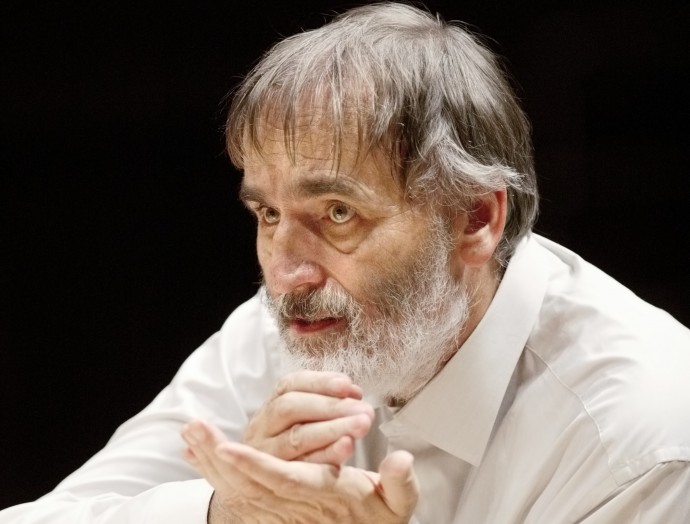Helmut Lachenmann is invited at “Hochschule der Künste Zürich» and «Opernhaus» Zurich.

Corinne Holtz
Helmut Lachenmann, one of the most important contemporary composers, wrote his first opera at the age of 62 and achieved the biggest success of his life with its world premiere in 1997. Avant-gardist and pupil of Luigi Nono, feared by the orchestras as “noise” composer, Darmstadt’s “victim” – as he amusingly defines himself – gives his take on Andersen’s fairy tale “Das Mädchen mit den Schwefelhölzern”, focusing mainly on the social and critical message of the material.
Lachenmann interprets the fairy tale as metaphor for the icy coldness of post-capitalist societies and breaks the narrative with texts by Leonardo da Vinci and Gudrun Ensslin. Synopsis: A girl tries in vain to sell matches on New Year’s Eve. She eventually lights the sticks herself and experiences the delight of bourgeois warmth for a brief moment in the “glow” of the flames. The girl ends up freezing to death and her dead grandmother takes her to heaven.
Interview with Helmut Lachenmann about Das Mädchen mit den Schwefelhölzern, Ruhrtriennale, Jahrhunderthalle Bochum 2013
Not a story, but “meteorological conditions.”
Lachenmann sees beauty as “denial of the accustomed” and music as a “liberated art of perception”, beginning with the creation of sound and the necessary efforts in order to achieve it. Lachenmann uses eight horns in his opera. “The eight horns are one single instrument. It all boils down to new ways of hearing and to do so I must start with suspending the melodious perspective.” Things he demands from the musicians are for example fluttering tongues, air noises, valve rattles and vibrations. This acoustically attractive effect results from the overlapping of two oscillations with frequencies only slightly differing from one another. But he goes even further and calls the opera a “pretext to write for singing voices”. The music does not tell a story but represents “meteorological conditions”. The girl is surrounded by freezing cold and feels burning fire for a moment.
The core of Lachenmann’s gestural music is actually theatrical. Those who experience it live can observe busy performers and invent their own scenery. Transforming these actions into the art form of ballet is a challenge. How can one create a choreography that goes beyond images and leaves room for music and its actors?
Helmut Lachenmann, Das Mädchen mit den Schwefelhölzern, Opernhaus Zürich 2019, Trailer
This new production: “Das Mädchen mit den Schwefelhölzern” is the focus of a three-day symposium, which the Zurich University of the Arts organises in cooperation with the Zurich Opera House, as well as the starting point for an interdisciplinary examination of Lachenmann’s work. Musicologist Hans-Ulrich Mosch illuminates Nono’s shadow, music journalist Julia Spinola the methods used in previous productions, dance scientist Stephanie Schroedter the transformation of musical score into movement. Finally, the composer and his choreographer Christian Spuck will discuss the opportunities and limitations of the new production with composer Isabel Mundry.
“Can an Adorno student be happy in the act of composing?”
Lachenmann’s utopian musical thinking has fallen out of date and is – perhaps for this very reason – of vital importance. In addition, the composer knows how to convey his beliefs in a humorous way. His colleague Hans Werner Henze once asked him if it was possible for him – as an Adorno pupil – to be happy in the act of composing. “No. Never happy, but I’ve been joyful.” What about the feeling of happiness after the premiere of a new production? “Every performance is an adventure and its outcome always uncertain.”
Corinne Holtz
Helmut Lachenmann, Allegro sostenuto 1986/88, interpreted by Trio Caelum
ZHdK: Zu Gast: Helmut Lachenmann: Congress / conference / symposium, 8.-10.11.19
Opernhaus Zürich: ‘Das Mädchen mit den Schwefelhölzern‘, 12.10.-14.11.19
neo-Profiles: ZHdK, Philharmonia Zürich, Basler Madrigalisten

